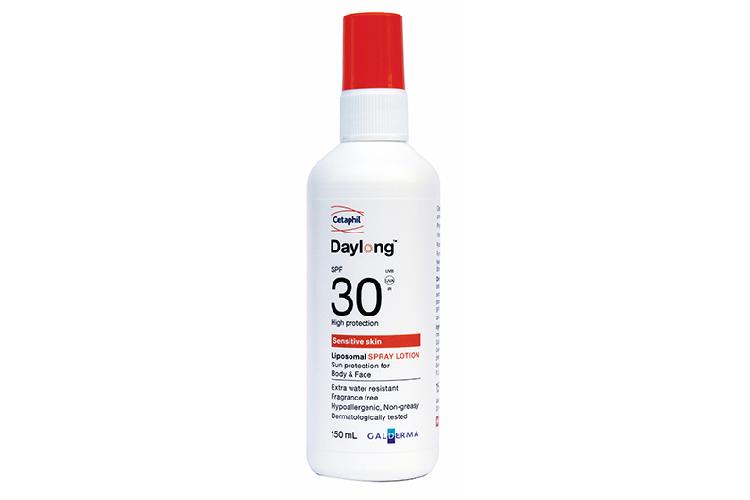
SAUDI ARABIA REPORTS LOW SKIN CANCER INCIDENCE BUT SUN-EXPOSED SKIN DISEASES
Despite being in one of the world’s most sun-exposed regions, Saudi Arabia is reporting a remarkably low incidence of skin cancer, according to one of Europe’s leading dermato-oncologists.
Yet Dr. Claas Ulrich, who heads the skin cancer centre at Berlin’s Charité University Hospital, one of Germany’s most research-intensive medical institutions which has been ranked by the country’s leading weekly magazine Focus as the best of over 1000 German hospitals, says the longer life spans of its nationals and changing dress patterns will increase the proportion of sun exposure related skin diseases paralleling trends in other parts of the globe.
Dr. Ulrich was addressing gatherings of Saudi-based medical practitioners and dermatological specialists across Jeddah, Riyadh and Dammam in lectures organised by the Swiss global leading dermatology company Galderma, the medical solutions company of Nestlé Skin Health, which has just launched its Daylong™ sunscreen range in the Kingdom.
“The fact is people in Saudi Arabia are living longer thanks largely to major strides in the healthcare sector,” explained Dr. Ulrich. “While most of the people over 60, particularly women, have largely been protected from ultraviolet radiation - the main cause of skin cancer - thanks to conservative clothing, reports show their most exposed areas – the face and hands and even feet – are vulnerable. Our data shows that long-term exposure to the sun in one of the world’s sunniest climates has led to increased susceptibility among this age group.”
Currently people aged 65 and over make up just 2.8% of Saudi’s 20.6 million national population and, according to the World Health Organisation, life expectancy in the Kingdom is now 75 – six years more than in 1990. However, a report from the Economic Research Department of the Saudi Arabian Monetary Agency forecasts that the proportion of Saudis aged 60 or more will rise to 25 per cent of the anticipated 40 million population by the end of 2050 with the number of people living to 80 or more could reach 1.6 million, or 4 per cent of the total population.
Dr. Ulrich has been urging medical practitioners to convince their patients to follow a simple two-stage preventative care programme. This, he says, includes regular daily application of medically-proven sunscreens and follow-up with daily sun damage repair products - the latest scientific breakthroughs in the fight against skin cancer and skin diseases related to sun exposure, such as cutaneous lupus, sun allergies, melasma and premature skin ageing.
“Many people do not choose products wisely or use them properly,” explained Dr. Ulrich. “They select based on the SPF factor and think that applying once during the day is enough – it is not. Most of the over-the-counter products available in the mass grocery retail sector provide cheap, but old-fashioned physical filters, mixed into an unpleasant fatty and sticky foundation which does not allow an even spread on the skin and is not suitable for people in need of regular sun-protection. As a consequence, sunscreen-consumers are tending to massively under-dose the sunscreen or simply ignore their dermatologists’ sun-protection advice completely.”
Dr. Ulrich explained new filtering technology should help fend off skin damage. “Encapsulated into a novel delivery system for active ingredients, called liposomes, these new filters are delivered precisely into the very upper part of the skin. Here the liposomes dissolve and while the encapsulating lipid-membrane nourishes the skin, the filters remain stable and waterproof,” he said.
“Recent clinical studies of these new liposomal sun protection products, show sustainable effects against skin cancer, cutaneous lupus erythematodes and photoallergies. Since in most sunscreens the amount of detectable sun-protection factor significantly falls below protection labelled on the bottle, novel dosing systems inspired by dermatologists could help users to apply the correct amount of sunscreen on their skin.
“Sunscreens have to be seen as a filter. Everyone understands what would happen if they used an insufficient coffee filter,” explained Dr Ulrich “well it’s just the same with sunscreens but the health consequences are just more drastic.”
Dr. Ulrich says children especially need a proper dosing dispenser to ensure they get the correct amount of sunscreen (COPLA standard 2mg/cm2) to obtain the protection factor labelled on the bottle.
“Once people have been in the sun – and that does not necessarily mean sunbathing but just going about their daily lives in a sun intensive climate – they should apply the new encapsulated DNA repair enzyme ‘Endonuclease’ products that actively support the skin’s repair mechanism and which are the next big thing in minimising the effects of sun damage.
“Recently introduced Infrared filters enlarge the protective spectrum of the sunscreen-range and have shown to decrease the sun´s destructive effects on elastic fibres, preventing premature skin ageing, which is now a major issue in cosmetic photo-protection.”
Dr. Ulrich says additional benefits of new-gen sun-screen products is, that they’ve been thoroughly tested either in very well conducted lab studies on cultured skin-cells or in comprehensive clinical studies published in renowned peer-reviewed international scientific journals.
“I don´t know any other sunscreen company going this extra mile for sustainable evidence on their products, than Galderma,” he added.
Dr. Ulrich, who has authored more than 50 scientific publications, numerous book chapters and edited special issues of the British Journal of Dermatology and Dermatologic Surgery, believes that the two-stage – prevention and repair – approach to skin protection can go a long way to warding off not just skin cancer, but skin ageing due to sun damage.
“These days people want to live longer and are striving for healthy, younger looking skin - new technology can help achieve that. The secret is to ensure the approach is sustainable and that the skin is protected all day long.”


























